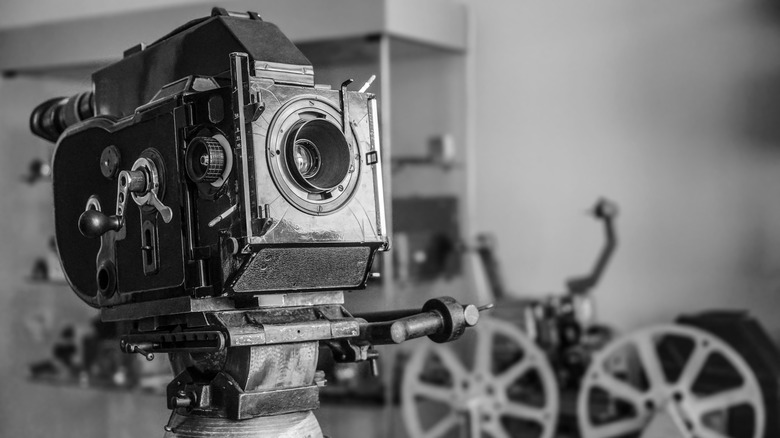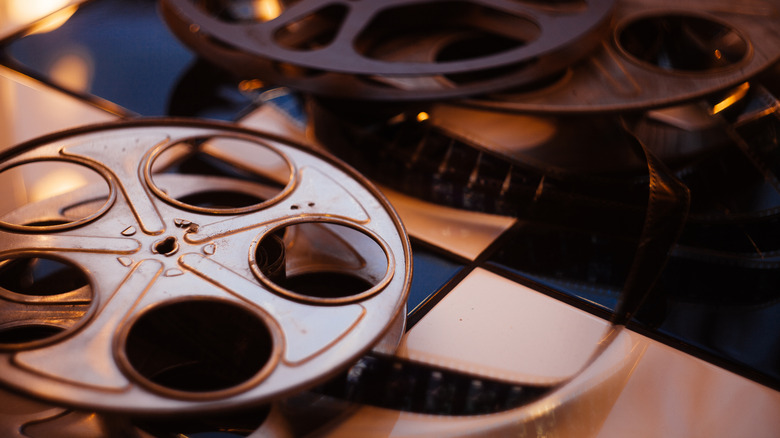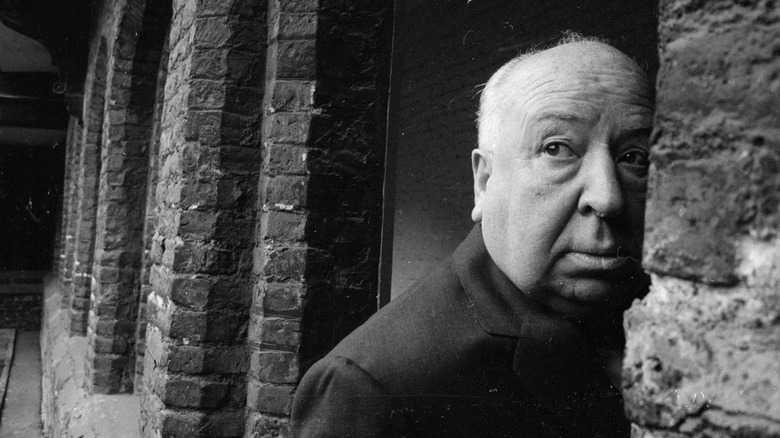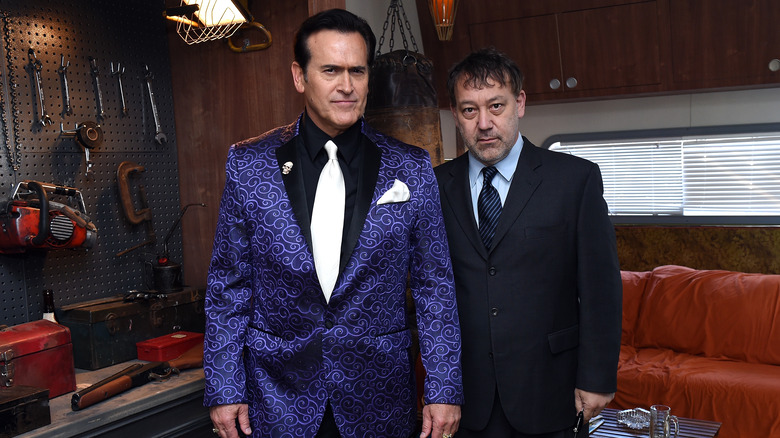The Surprisingly Long History Of Film Trailers
There's nothing quite like going to see a movie in a theater. It's hard to beat the ritual of forking over a shocking amount of money for popcorn and a soda, then fumbling with them in a vain attempt at trying to dig a ticket out of your pocket, and finally taking a nice, cushy seat as the house lights go down and the show begins.
Of course, there is the matter of the trailers to get through first. A parade of Hollywood's upcoming fare and the last chance to answer text messages before it becomes a social no-no. But they never seem to end and by the time the feature you paid to see is finally ready to start, half of that expensive soda and a third of the popcorn are making themselves at home in your stomach.
Yes, these days they're thought of as a bit of a nuisance, but trailers have played an important role in the Hollywood film marketing machine for decades (via the University of Michigan).
Early trailers at the start of the film industry
According to Hopes and Fears, the first movie theater was put together not long after movies themselves came into existence. Max and Emil Skladanowsky, two German inventors, decided to bring their collection of films to The Berlin Wintergarten theater. The theater had played host to traditional shows featuring dancing and magicians, but when the Skladanowskys brought their films there, it effectively turned the Wintergarten Theatre into the first movie theater.
As theaters became a business, it was important to entice customers to return and shell out more nickels. Serialized films helped with this, and in 1912, the trailer appeared at the end of an installment of "The Adventures of Kathlyn." The reel ended with the titular Kathlyn trapped in a lion's den, when the words "Does she escape the lion's pit? See next week's thrilling chapter!" appeared on the screen. It's an archaic version of today's trailers, but it served the same purpose. (Spoiler alert: She escaped from the lions, says Chicagology.)
Nils Granlund, an advertising manager for Marcus Loew theaters, is credited with coming up with the first version of a trailer as they're known today, back in 1913. Granlund took some rehearsal footage of a Broadway show and put it together in a short promotional package which was shown after — or trailing — the feature film (via the University of Michigan).
The dawn of the trailer industry
Granlund's idea caught the attention of Marcus Loew, who was the owner and namesake of the theater chain. According to Hopes and Fears, he asked Granlund to make more of these promotional films, and just a year later, Granlund was cutting up trailers for one of the biggest stars in the world: comedy legend Charlie Chaplin.
In 1919, the next innovation came along in the form of the National Screen Service. According to the University of Michigan, it was founded by Herman Robbins and served as a company that studios and theater chains could go to for trailers. According to Original Film Art, the company was also responsible for producing movie posters, making them a titan in the world of film marketing. It was a shrewd decision on Robbins' part because it led to the NSS having almost complete control over trailer production in Hollywood. They held on to that virtual monopoly for decades.
Filmmakers change the game
After years of farming out the chore of making trailers, along came auteur filmmakers like Alfred Hitchcock (above) and Stanley Kubrick. They realized that the trailer was another component of their artistic vision and that it would be a good idea to have a say in how the trailers were pieced together (via the University of Michigan). Hitchcock famously used the trailer for his 1960 classic "Psycho" to tease aspects of the film and make people want to run out and buy tickets, per Hopes and Fears.
Another massive change came in the mid-1970s when blockbusters started changing the ways movies were promoted across the board. Stephen Spielberg's 1974 film "Jaws" is often credited with being the first blockbuster, and those that followed ushered in a new era for Hollywood. Trailer's started showing up on TV, especially during prime-time, when the most sets of eyes were watching. The goal was to practically bludgeon would-be moviegoers by repeatedly airing the trailers in hopes that they'd go buy tickets. This remained one of the primary movie marketing tactics for decades and is still seen today.
Trailers managed to launch some careers
Typically, when discussing movie trailers, we think of them promoting an upcoming film, but the space occupied by trailers has been used by up-and-coming filmmakers to gain attention that helped them make a feature.
In 1977, a student at Michigan State University named Sam Raimi (above, right) and his friend since childhood, Bruce Campbell (left), had made a short film called "It's Murder," which was well received by those who saw it. Some suggested that they build on the short film and turn it into a feature. However, they decided to do something else (via the University of Michigan).
They made another short on a shoestring budget called "Within the Woods," and asked a theater owner in Detroit to show it before a screening of "The Rocky Horror Picture Show." It was a hit with audiences, and they used it to secure funding for a feature called "Book of the Dead," which was eventually renamed "The Evil Dead." It went on to become a horror cult classic, and both Raimi and Campbell have had successful careers in Hollywood.
The internet changes the game
One of the next major changes in movie trailers had less to do with the way they were made, and more to do with how they were used as a marketing tool and viewed by the public. Video-sharing websites like YouTube allowed studios to post trailers online for fans to watch on-demand.
Quentin Tarantino and Robert Rodriguez's double-feature film "Grindhouse" included several trailers for what were then fictional movies, but were used as a way of experimenting with techniques in making trailers, and fit the whole low-budget, double-feature vibe they were going for. These trailers were uploaded to YouTube, and two — "Hobo With a Shotgun" and "Machete" — became so popular that they were turned into feature films. "Machete" was such a successful feature that it merited a sequel as well ("Machete Kills"), both starring Danny Trejo.
There's usually a financial reason for industry-wide shifts like trailers being released online, and according to the University of Michigan, the internet has offered studios a much more cost-effective distribution method. It allows trailers to be seen by lots of people, many of whom are already somewhat interested in the film, without having to pay for a bunch of expensive TV spots.





